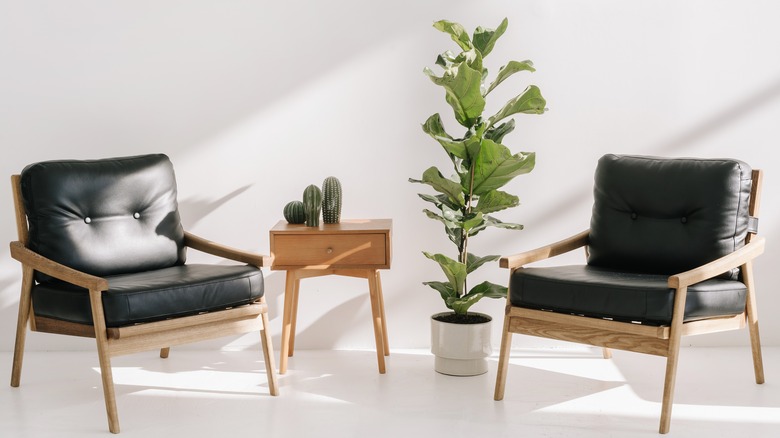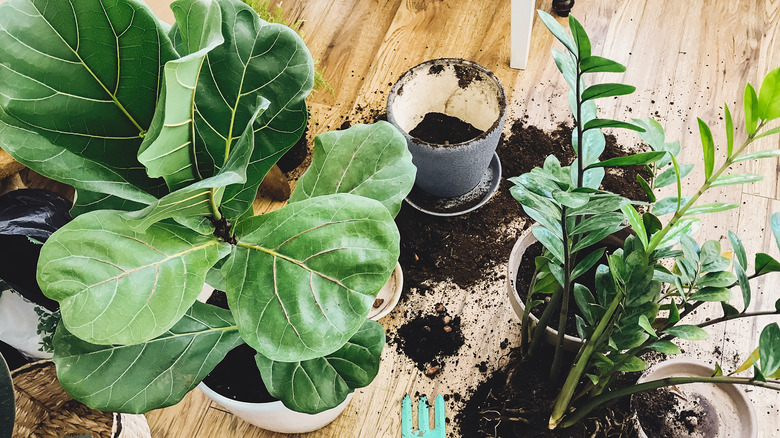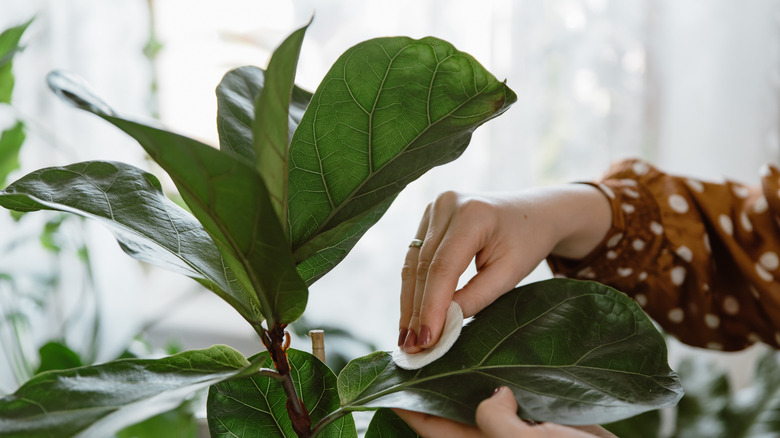Bobby Berk's Favorite House Plant That Always Ends Up On Queer Eye
Bobby Berk, the underrated star of Netflix's hit series Queer Eye, is one of the show's fabulous interior designers. While Berk admits he may not get as much screen time as his co-hosts, he certainly leaves the deepest impressions with his stunning redesigns of their guests' spaces. Notorious for turning repressed rooms into modern masterpieces, Berk has developed a bit of a reputation for leaving behind a few key fingerprints in each of his renovations — most obvious of Bobby's signature touches is his penchant for houseplants, particularly the fiddle leaf fig.
Tall, angular, and verdant, this indoor tree is strikingly beautiful and has become quite trendy in home décor, appearing in many of Berk's interior updates. While it's glossy leaves and crooked trunk add great depth and texture to an indoor space, the plant itself can be high maintenance. Thankfully, berk has some advice on how to look after them, along with some alternative options that are a bit easier to take care of.
Explosion of the fiddle leaf fig trend
Long before Bobby Berk began foraging for fiddle figs in his interior design scapes, the trendy tree sparked interest due to a spike of Pinterest posts. Since then, the plant has all but consumed the design world. In an article on his personal website, Bobby Berk, he explains, "It's been a staple of interior designers for years, and can work with just about any interior style. It also comes in lots of sizes to fit different spaces, from table top to a 10-foot tree."
Interior design has long featured a trademark plant, usually with one or two dominating for a decade or so. While the ficus was popular in the '90s and the spider plant wove its way into many homes in the '70s, the fiddle leaf fig has certainly grounded itself as the houseplant of the 2010s. While the 2010s have passed, the obsession over fiddles has no end in sight and Berk will likely continue to employ them in his designs (and feature them on Queer Eye) for the foreseeable future.
How to care for a fiddle leaf fig
Fiddle leaf fig trees have a reputation for being difficult to care for, but in their defense, their natural habitat looks and feels nothing like a typical American home. Native to tropical rainforests, fiddles thrive in humidity, so keep them away from air vents, especially in winter, as the dry air will suffocate the tree. Investing in a small humidifier would serve your fiddle and most other houseplants well.
Fiddles require bright, indirect light, so place them near a south-facing window. They may need time to acclimate to this space so beware of scorched or warped leaves. On his site, Bobby Berk says "to rotate your plant every few months to keep it growing straight." Otherwise, your tree will reach toward the light and will develop sideways-leaning branches. Using a hydrometer to measure how moist the soil is will help to avoid overwatering as fiddles detest water-logged roots. Instead, a good strategy is to water when the topsoil, or the first few inches, has dried out completely.
Berk believes that "when it comes to your home, one of the simplest ways to bring your space to life is with plants." So if you're not up for the challenge of a fiddle leaf fig, consider one of Berk's other recommended plants that are easy to care for. Snake plants, Audrey ficuses, or rubber trees make beautiful additions to the home and all are great low-maintenance options for those still toning their green thumb.


